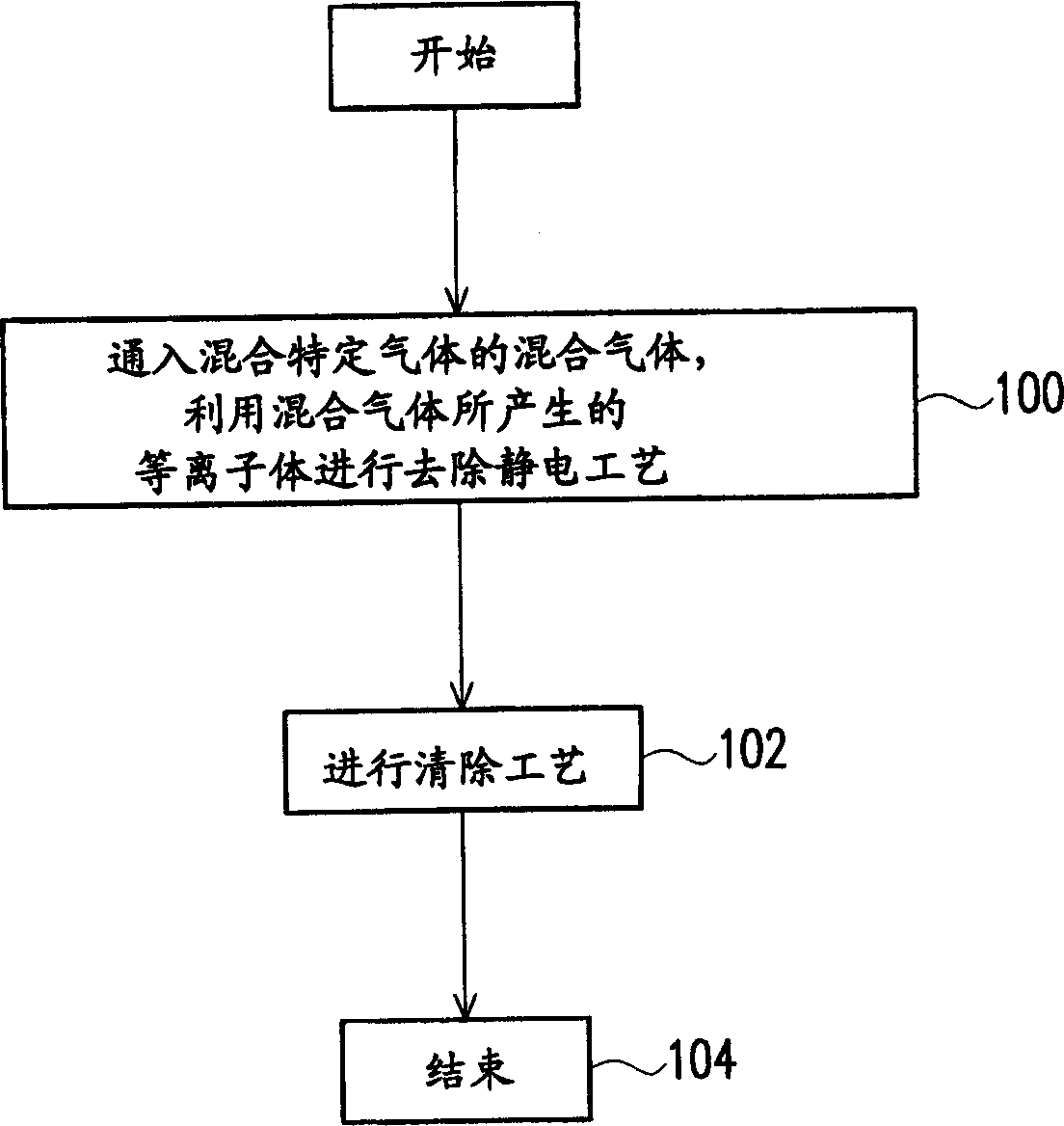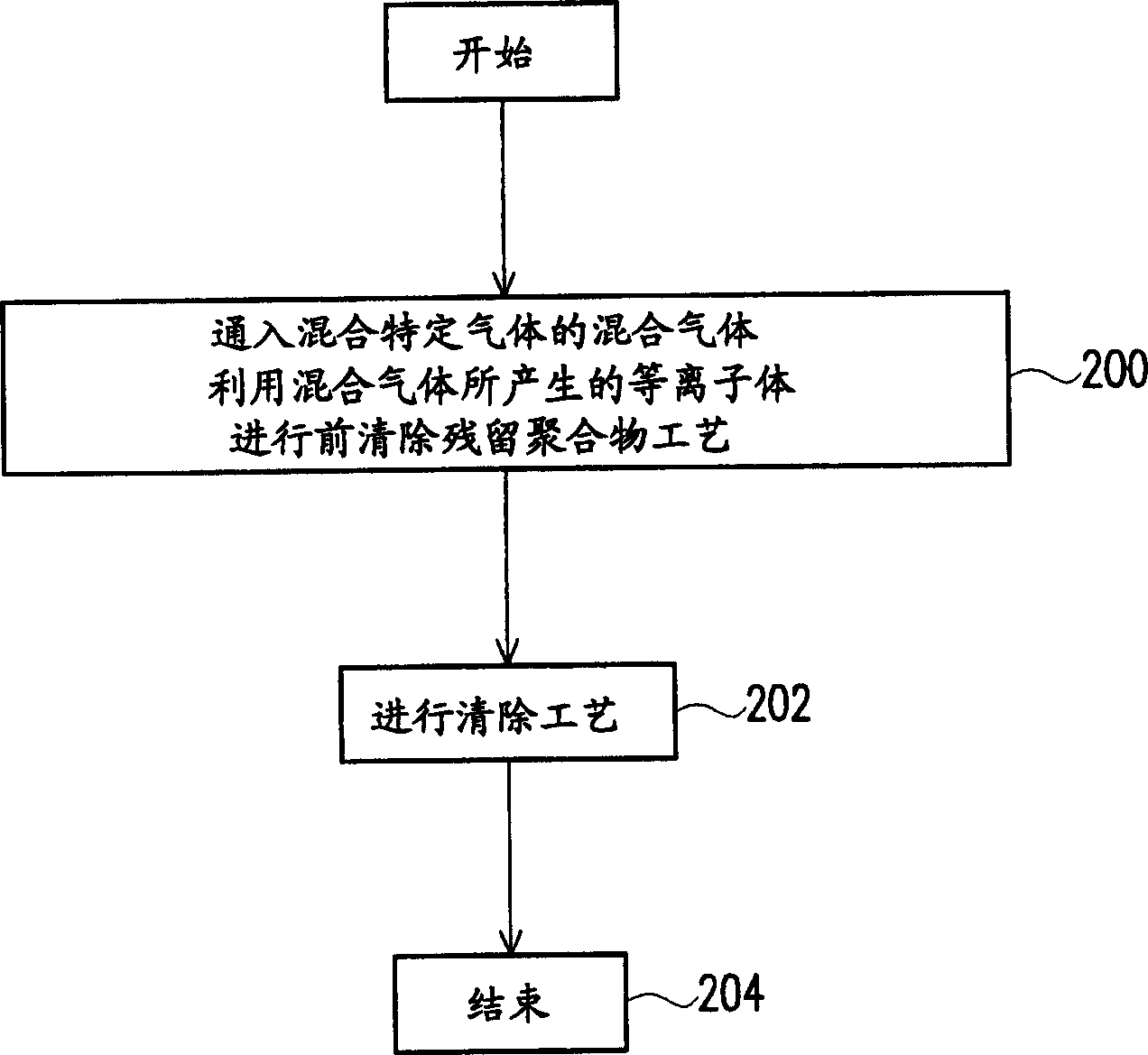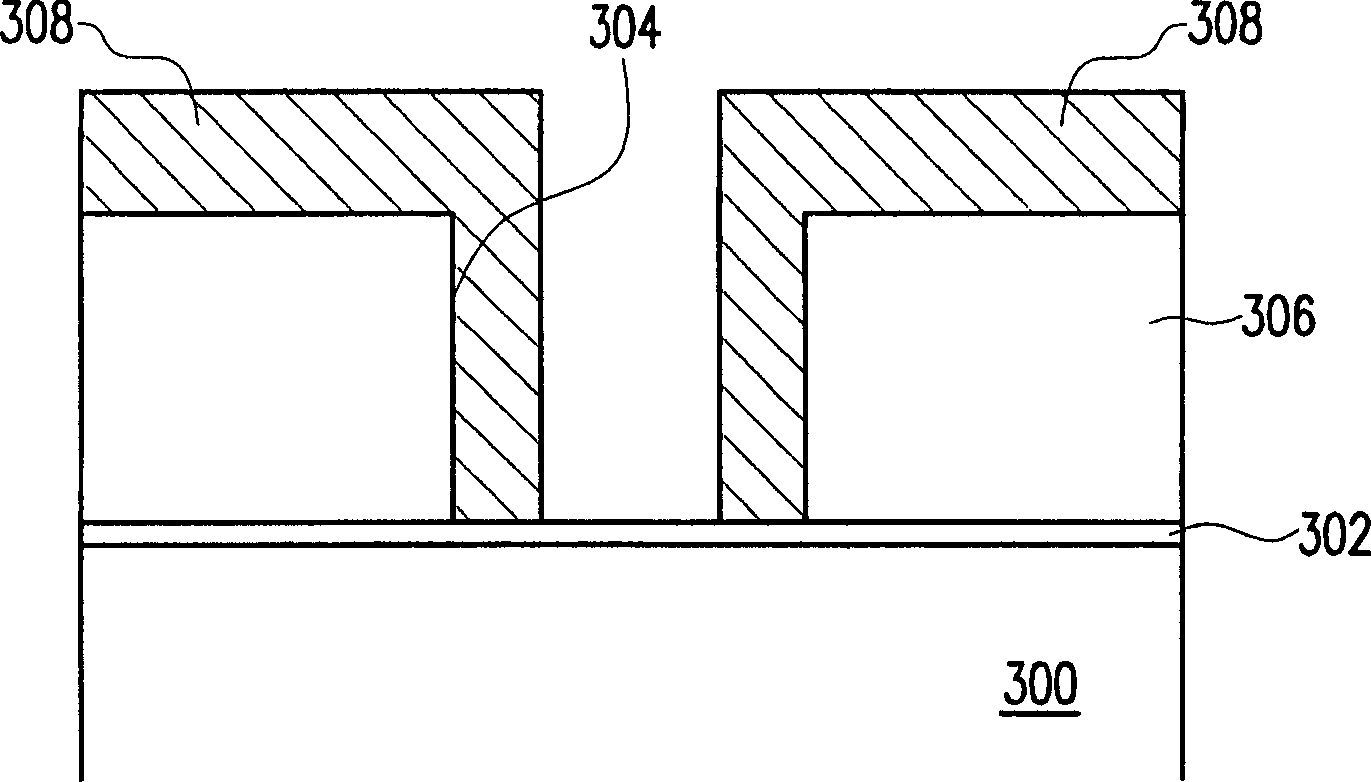Residual polymer eliminating method
A technology of polymers and mixed gases, which is applied in the fields of electrical components, semiconductor/solid-state device manufacturing, circuits, etc., can solve problems such as inability to remove, and achieve the effects of deleting removal steps and time, stabilizing product output, and shortening product output stability
- Summary
- Abstract
- Description
- Claims
- Application Information
AI Technical Summary
Problems solved by technology
Method used
Image
Examples
no. 1 example
[0027] figure 1 It is a flow chart of steps for removing residual polymers according to a preferred embodiment of the present invention, which can be applied to an etching process for forming openings in a dielectric layer, wherein the dielectric layer is, for example, a silicon oxide dielectric layer, and the dielectric layer is The openings formed in are, for example, Metal Via (MVIA) openings, Contact openings, and Dual Damascene openings. Moreover, this embodiment adopts a magnetic-enhanced reactive ion etching (Magnetic-Enhanced RIE, MERIE for short) system machine.
[0028] Usually, the reaction gas used for etching is a gas containing carbon fluoride, such as tetracarbon octafluoride (C 4 f 8 ), five carbon octafluoride (C 5 f 8 ) or tetracarbon hexafluoride (C 4 f 6 ). Because after the etching process is carried out on the machine of the magnetic field enhanced reactive ion etching system, it is easy to have the problem of uneven accumulation of electrons due t...
no. 2 example
[0034] figure 2 It is a flowchart of steps for removing residual polymers according to another preferred embodiment of the present invention, which can be applied to the removal process of the stop layer (Stop Layer), wherein the stop layer is, for example, a self-aligned contact window (Self Align CONT), no The borderless CONT, the barrier layer for etching the dielectric layer in the dual damascene process, etc., are made of silicon nitride, silicon carbide or silicon oxynitride, for example. In order to illustrate the position of the above-mentioned barrier layer, take the example of etching and removing the barrier layer in the step of forming the via window opening in the dual damascene process, please refer to Figure 3A and Figure 3B A schematic diagram of the manufacturing process for forming via openings and trenches in the dual damascene process is shown.
[0035] Please refer to Figure 3A , a barrier layer 302 has been formed on the substrate 300 , and a diele...
PUM
 Login to View More
Login to View More Abstract
Description
Claims
Application Information
 Login to View More
Login to View More - R&D
- Intellectual Property
- Life Sciences
- Materials
- Tech Scout
- Unparalleled Data Quality
- Higher Quality Content
- 60% Fewer Hallucinations
Browse by: Latest US Patents, China's latest patents, Technical Efficacy Thesaurus, Application Domain, Technology Topic, Popular Technical Reports.
© 2025 PatSnap. All rights reserved.Legal|Privacy policy|Modern Slavery Act Transparency Statement|Sitemap|About US| Contact US: help@patsnap.com



